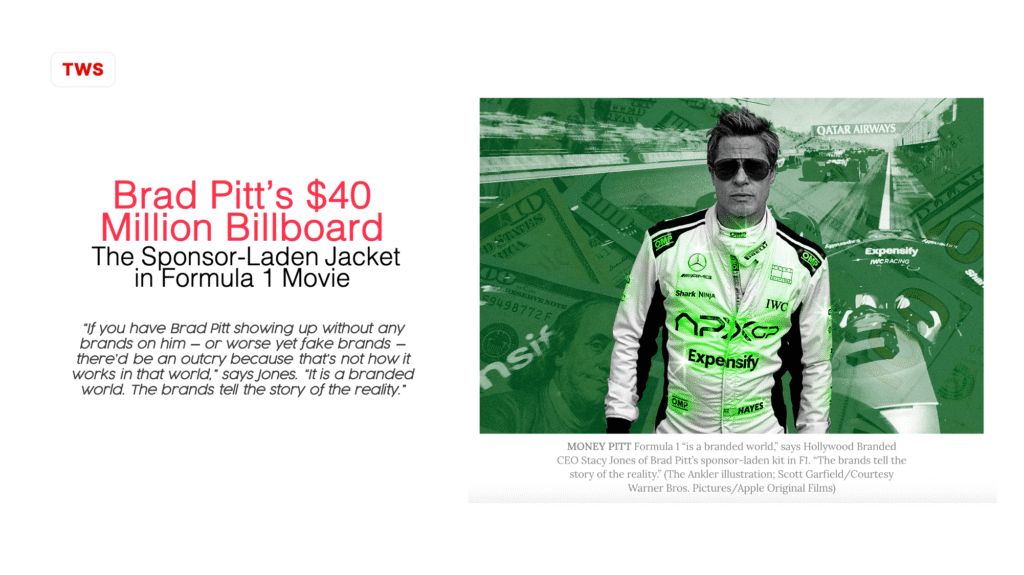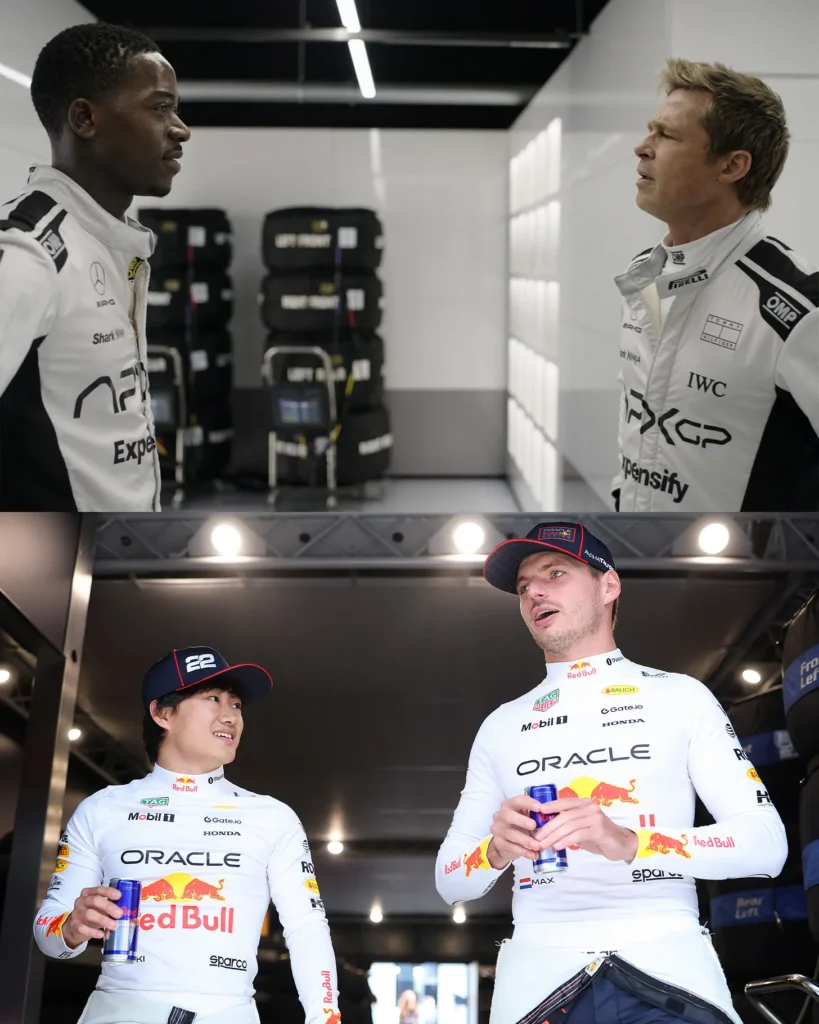
Brad Pitt’s $40 Million Billboard: The Sponsor-Laden Jacket in Formula 1 Movie
When Brad Pitt steps into Formula 1 for his upcoming Apple Original Films and Warner Bros. production, he won’t just be driving fast cars—he’ll be wearing what could be described as a $40 million billboard.
Pitt’s racing suit, decked out in sponsor logos from brands like Expensify, Shark Ninja, IWC, and Mercedes AMG, reflects one of the most striking truths about modern Formula 1: the sport is a living, breathing branding machine. Every inch of fabric on an F1 driver’s kit tells a commercial story, and Pitt’s character is no exception.

Hollywood Branded CEO Stacy Jones, who worked with Expensify, a cloud-based business expense tracking platform, and automotive fluid company PEAK on their F1 title sponsor deals, says the fictional APXGP racing team and the culture surrounding the sport relieved some of the worry about audiences rolling their eyes over the proliferation of logos.
“If you have Brad Pitt showing up without any brands on him — or worse yet fake brands — there’d be an outcry because that’s not how it works in that world,” says Jones. “It is a branded world. The brands tell the story of the reality.”
The Power of Product Placement
Formula 1 is one of the most sponsor-heavy sports in the world, with brand logos plastered on cars, helmets, trackside barriers, and even team water bottles. By putting Pitt—one of the world’s most recognizable actors—in a sponsor-laden kit, the movie essentially turns him into a walking product placement vehicle.
Stacy Jones, CEO of Hollywood Branded, describes it well: “Formula 1 is a branded world. The brands tell the story of the reality.” By bringing these logos into the film, the production isn’t just being authentic to the sport—it’s unlocking a new kind of value proposition where advertisers pay millions for screen time that feels both natural and aspirational.
A Cultural Crossover
The film represents more than just entertainment. It’s the merging of two global cultures:
- Hollywood storytelling—where characters, emotion, and star power drive audience connection.
- Formula 1’s branding machine—where logos, sponsors, and partnerships are inseparable from the sport itself.
Pitt’s racing suit sits right at that intersection, acting as a cultural artifact of branded storytelling.
The Future of Branded Cinema?
If the movie succeeds, it may set a precedent for how brands enter film narratives. Instead of clunky product placement, we could see industries with inherently sponsor-driven cultures (like sports, gaming, or even esports) using movies as authentic billboards.
Brad Pitt’s F1 jacket may not just be part of the costume—it could be remembered as one of the most expensive and innovative ad spaces in cinema history.